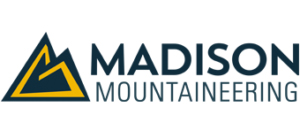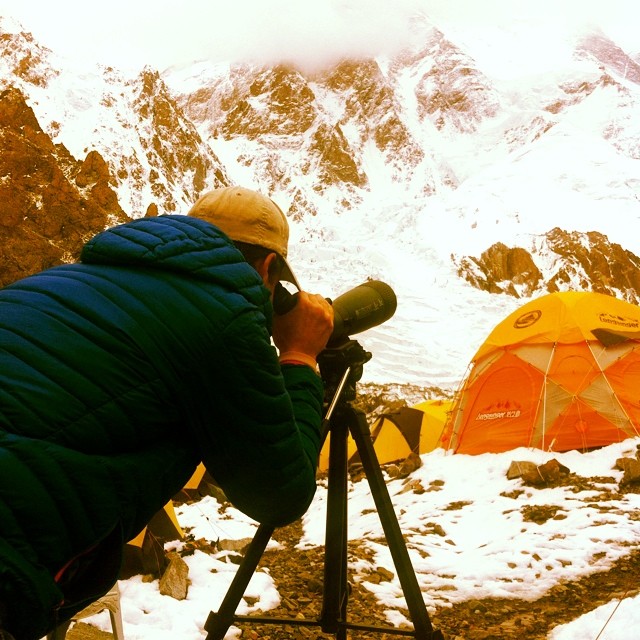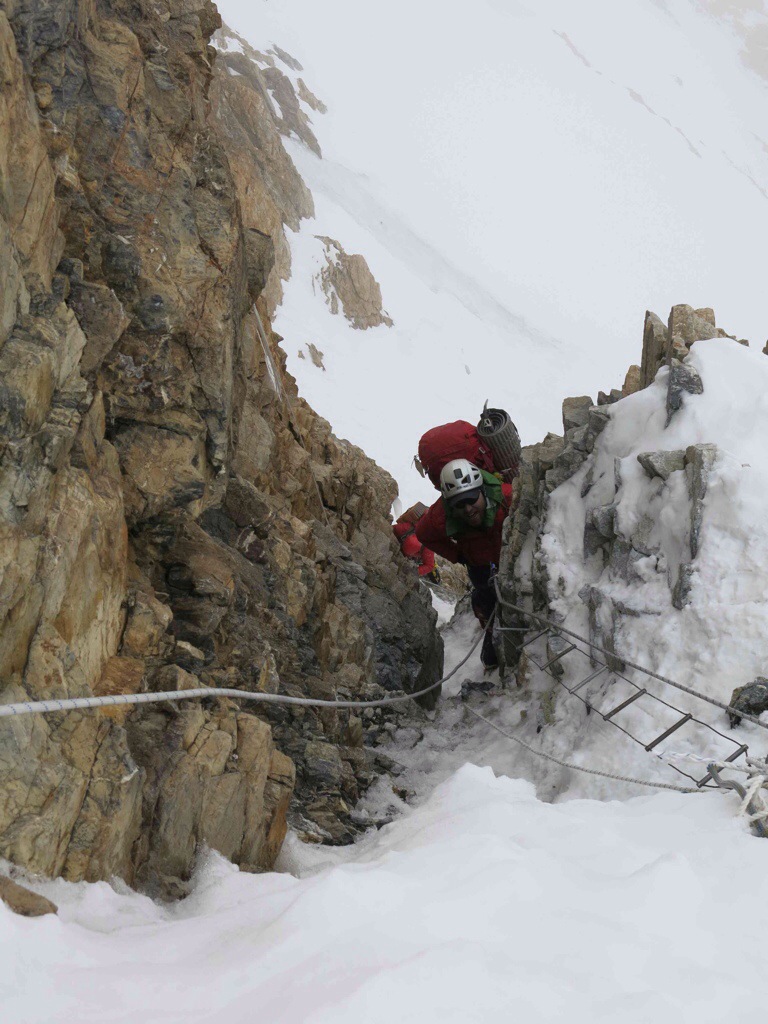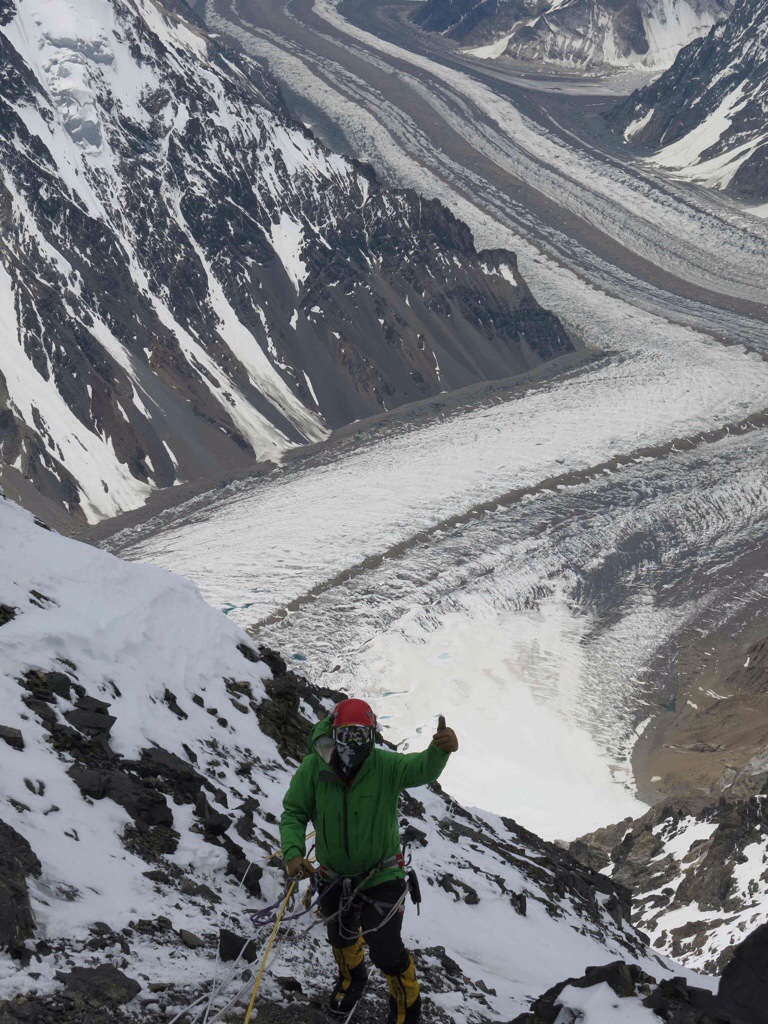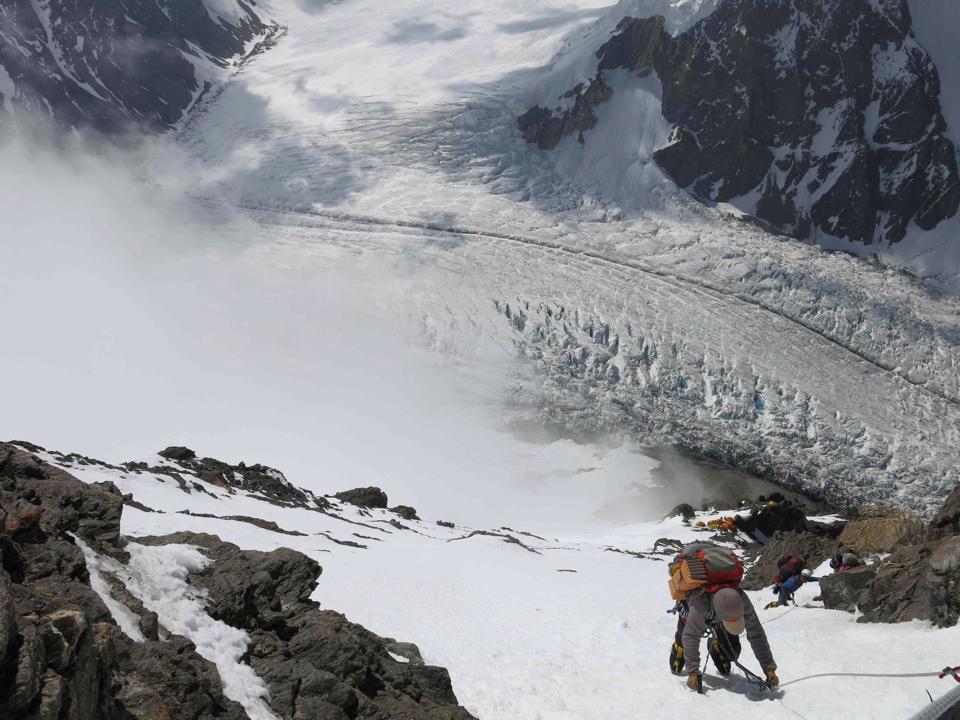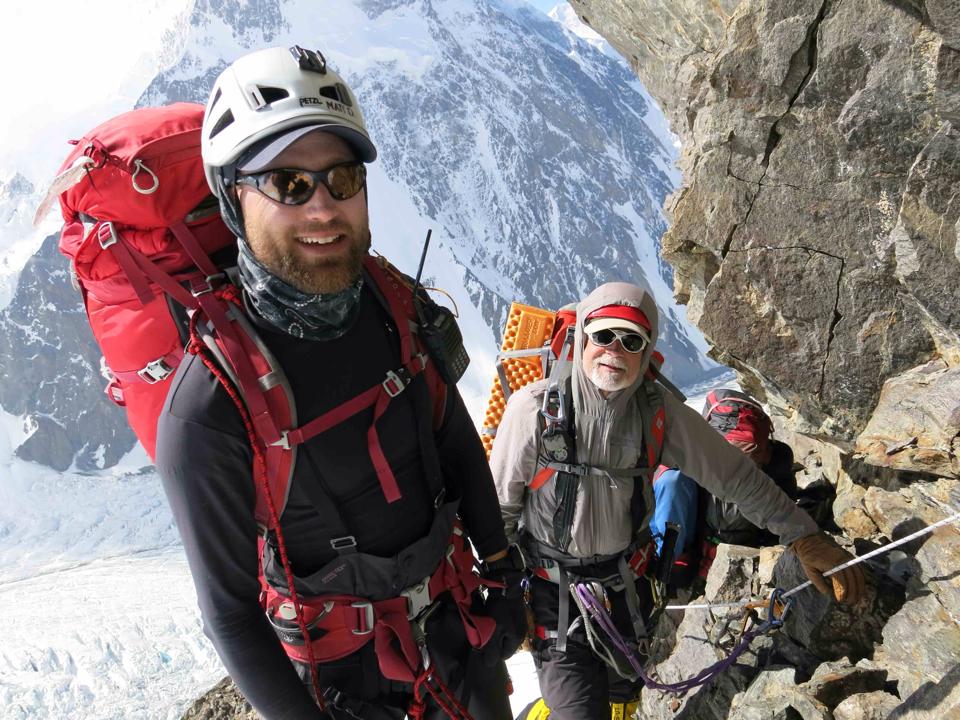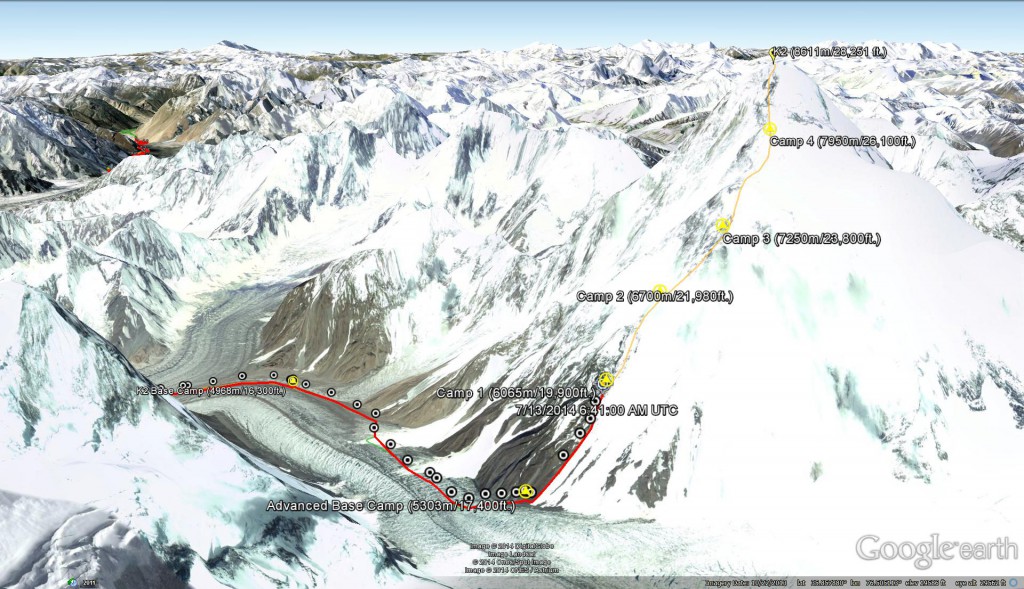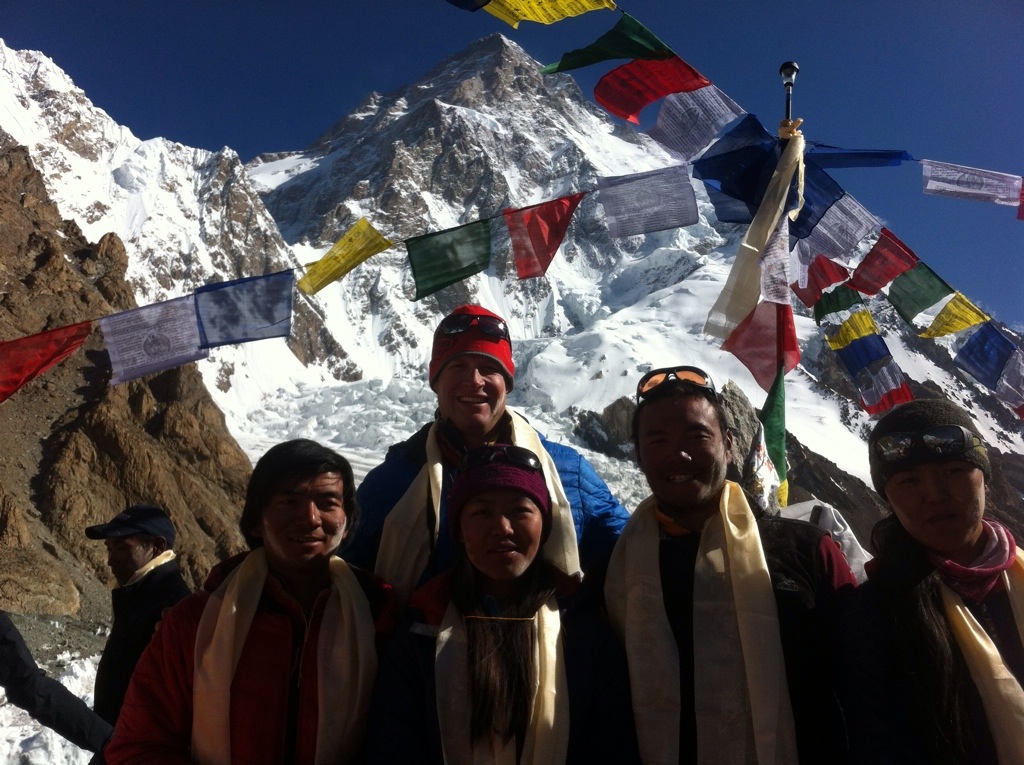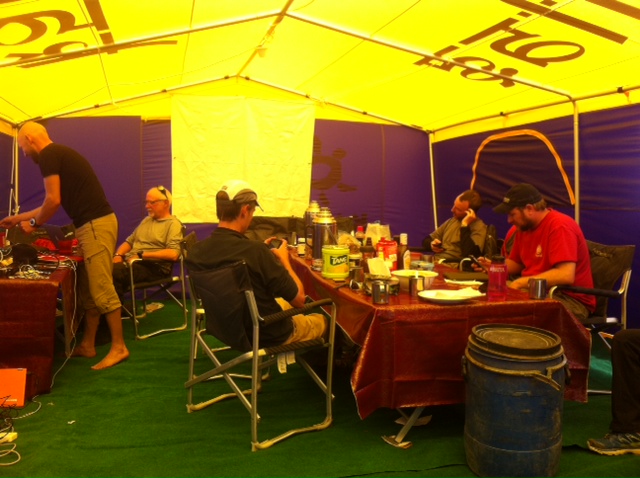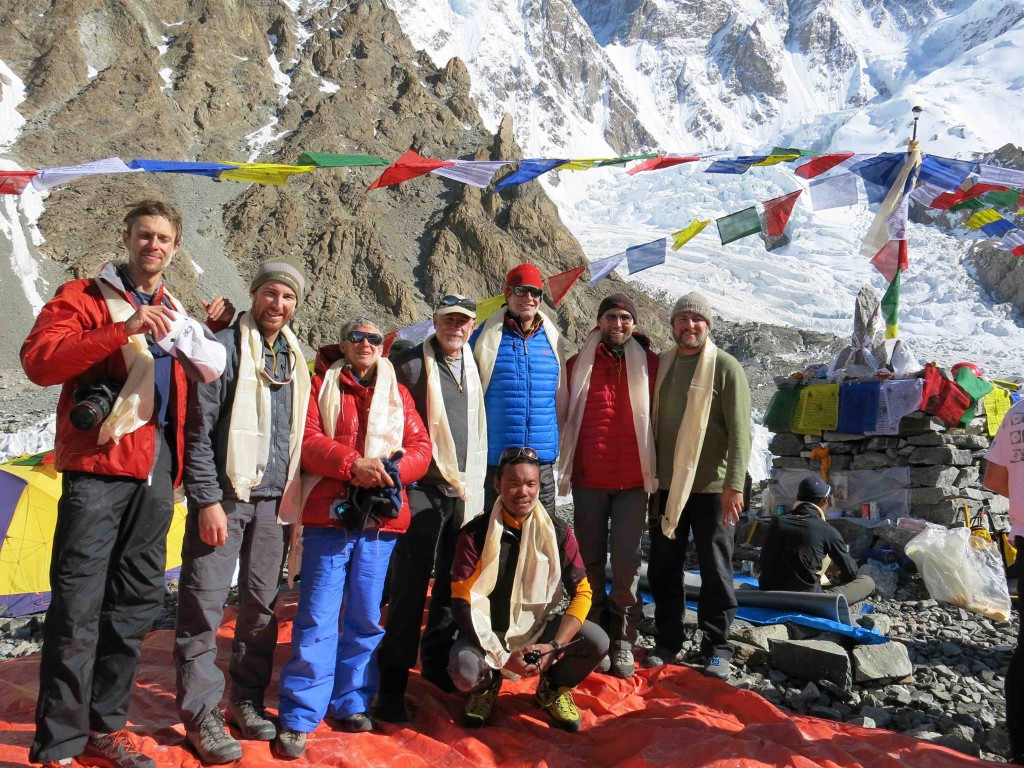
Over the last five years many climbers have attempted to climb K2 every season, however there has been only one short window (July 2012) where climbers made the K2 summit from the south side. (In 2011 a small team of elite climbers with Gerlinde Kaltenbrunner reached the summit via the North Ridge on the Chinese side of the mountain). The notorious 2008 season on K2, where less than 30 climbers reached the summit but many had a tragic ending on the descent, has been well chronicled in recent years by the written works “One Mountain Thousand Summits” and “Buried in the Sky” as well as in films “The Summit” and “K2: Siren of the Himalaya.” These works illustrate multiple factors of why K2, the “Savage Mountain” is a much more daunting and formidable challenge than Everest:
- The unforgiving steep slopes of rock, snow, and ice that require a technical and precise mixed climbing ability, where one mistake can easily result in a fatal fall.
- The weather being much more difficult, high winds and frequent snowstorms making climbing difficult, and making the route at times unsafe with avalanche conditions.
- The objective hazards such as rock fall, ice fall, and snow avalanches. It is believed that a snow avalanche wiped out climbers Marty Schmidt and son in 2013 at Camp 3.
- The lack of support on the mountain. On Everest (south side) there are approximately 30 teams each season, and many of these teams work together and share the task of establishing the climbing route. On K2 there are 4 teams in base camp, and we are currently working with only one other team to establish the route.
The statistics on K2 are grim, approximately 1 out of every 4 climbers who make the summit do not return. Of the climbers who have successfully reached the summit of K2, there are only 4 who have reached the top twice (www.8000ers.com), and none have reached the top 3 times. For all of the climbers who have reached K2’s summit since the first ascent in 1954, over 20 times as many have reached the summit of Everest.
The first Americans reached the summit of K2 in 1978, a total of only 10 American climbers have reached the top and returned safely since then (www.8000ers.com):
1978: (First American Ascent) Louis F. Reichardt, James Wickwire, Richard Ridgeway, John Roskelley
1990: Steve Swenson
1992: Scott Fisher, Charlie Mace, Ed Viesturs
1993: Philip Powers, Dan Mazur
1995: Rob Slater (died on descent)
1996: Carlos P. Buhler
2000: Christopher Shaw, William Pierson
2007: Christopher Warner
As climbers evaluating the challenge of K2, safety is our number one priority. If we are blessed with a good weather window and good route conditions, we will make a summit attempt. We feel lucky to be the only Americans in this corner of the Karakorum, experiencing an awe inspiring mountain range, in the northern region of Pakistan.
